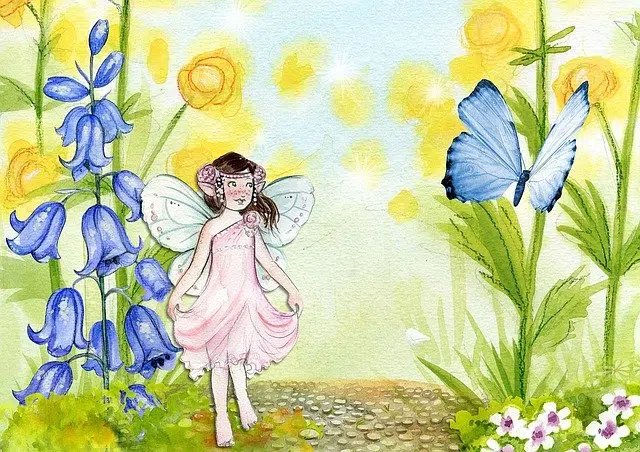
Fairies are represented with a female body and wings.
The etymology of fairy takes us to the Latin fata . A fairy is a fantastic creature in female form to which magical abilities are attributed.
For example: “Yesterday I saw a movie where a fairy fulfilled a poor girl's dream,” “My daughter asked us to decorate her room with elves and fairies,” “When I was little I believed that fairies really existed, that's why I used to Look for them everywhere.”
Representation of fairies
Fairies are usually represented as women of great beauty who have butterfly wings . Tradition indicates that these mythological beings are responsible for protecting natural resources and helping people in different ways.
Although there are differences according to each culture , it is usually believed that fairies can perform spells and enchantments . Some use wands or magic powder to carry out the supernatural action.
Protagonists of classic stories and video games
A fairy tale is known as a fictional story that is told through folklore characters (such as fairies, but also witches, mermaids, ogres, goblins and other beings) and that includes some type of enchantment. “Snow White” , “Sleeping Beauty” and “Hansel and Gretel” are some of the most famous fairy tales.
In these stories the figure of the fairy godmother usually appears: a fairy who protects or guides another character. These fairies, therefore, fulfill a role similar to godparenting.
Fairies also play a relatively important role in video games , where they usually fulfill roles similar to those in traditional tales. In the series of titles The Legend of Zelda , developed and published by the Japanese company Nintendo since 1986, fairies often appear as very powerful characters, capable of returning life energy to the main character after having received a lot of damage during a fight. battle, and even to revive him as soon as he is defeated by his enemies.

Fairies are common protagonists of children's stories.
fairy classes
While there are many types of fairies, they are not related to the mythology from which they emerged, but some come from fusions of two or more mythologies, as well as the personal beliefs of their many admirers. People who believe in spiritualism and esotericism know a classification that, among other characteristics, associates some of the fairies with the elements. Let's look at some of them below:
* Lamias : they belong to Basque mythology. They are characterized by having long hair, which they keep radiant with gold combs that they take great care of. The terrestrial ones have feet similar to those of ducks, while the marine ones, called Itxaslamiak , resemble mermaids ;
* Sylphs : they are the fairies that Paracelsus raised and represent the wind;
* Salamadras : they are associated with fire;
* Nymphs : these fairies are part of Greek mythology, and are classified into several others:
+ Naiads : they live in rivers, and some of them are their daughters;
+ Nereids : they are daughters of Nereus, the god of sea waves, and they live in the Mediterranean Sea ;
+ Oceanides : they are daughters of the ocean, where they live. One of them, Doris, is the mother of the Nereids;
+ Hamadryades : each one is related to a tree, so that if someone cuts it down, they die with it;
+ Melíades : they are the oldest. They arise from the blood of the god of Heaven, Uranus.
The concept in colloquial language
In colloquial language , finally, the idea of a fairy tale is often used as a synonym for something idyllic or with a happy ending .
We can appreciate this use in the following expressions: “My childhood was a fairy tale: I lived by the sea, surrounded by my loved ones” , “I thought that working on television was going to be a fairy tale, but I suffered a lot” , “My grandmother's story is similar to a fairy tale.”
